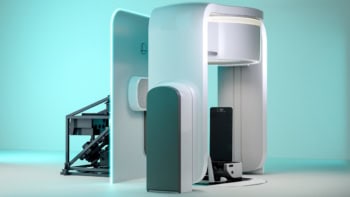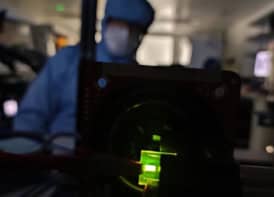The quest for ever-shorter laser pulses inevitably results in each pulse containing fewer and fewer oscillations of the laser field. Indeed, the shortest visible and infrared laser pulses are typically just a few femtoseconds (10-15 seconds) in duration and contain just a few cycles of the laser field. However, there is a need for even shorter pulses to study fundamental physical, chemical and biological processes on shorter and shorter timescales. Moreover, many applications require photons with higher energies, so there is a corresponding need for ultrashort pulses at shorter wavelengths in the extreme ultraviolet and X-ray regions of the spectrum. Ferenc Krausz of the Technical University of Vienna and co-workers in Germany and Canada have now taken a major step in this direction (M Drescher et al 2001 Science Express 1058561).
They used a technique known as ‘high-harmonic’ generation to convert a 7 femtosecond infrared pulse into a 1.8 femtosecond X-ray pulse. In harmonic generation a large number of photons are combined in a noble gas – the Vienna team used neon – to create a single photon with a correspondingly reduced wavelength. By filtering the harmonics, it is possible to control the duration and wavelength of the X-ray pulse. Krausz and co-workers used such a pulse to study an laser-induced energy shift in krypton atoms with a time resolution that was shorter than a single cycle of their laser source (which lasts 2.6 fs).
Physicists may be able to use the new technique to study processes that occur on sub-femtosecond timescales such as inner-shell phenomena in atoms and ionization via ‘optical tunnelling’. Drescher and colleagues are optimistic that their discovery will pave the way for ultrafast spectroscopy – the study of processes that take place on timescales of just attoseconds – 10-18 seconds.
Over the last four years, other groups have produced laser pulses with durations of around 10 femtoseconds using the high-harmonic method. However, the light in these pulses had longer wavelengths – in the visible and near-infrared regions of the spectrum. These pulses could not be shortened further because they were already approaching the fundamental lower limit for light of these wavelengths.



